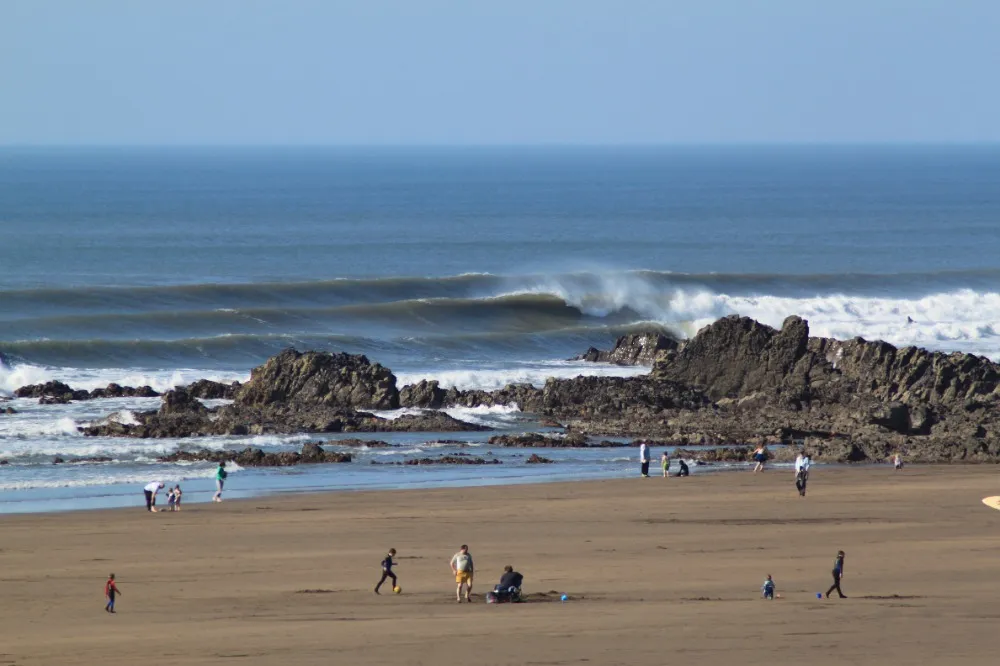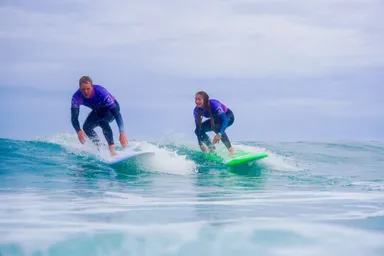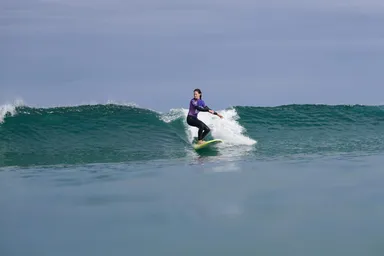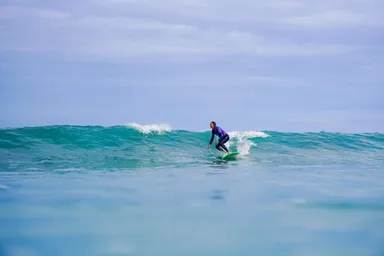7 Surf Breaks You Might Find At Your Local Beach
Surf breaks are the spots where waves break in a certain way—shaped by the sea floor, tides, and surrounding landscape. These natural features create different types of waves, which can completely change your surfing experience.
Some surf breaks produce long, rolling waves perfect for beginners. Others create steep, powerful walls of water better suited to experienced surfers. That’s why understanding surf breaks is so important—it helps you choose the right spot for your skill level and the kind of session you’re looking for.
Below are 7 types of surf breaks you might find at your local beach, and what each one has to offer:

1. Beach Break
This is the most common type of surf break and occurs when waves break over a sandy ocean floor. The waves tend to be more consistent and can vary in shape and size depending on sandbars and tides. Beach breaks are often preferred by beginners due to the forgiving nature of sand compared to rocks or reef. Here at OA Surf Club we are able to run safe surf sessions at Widemouth Bay - our local beach break.
2. Shore Break
Beach Break's angry cousin. While these waves also break over sand, they are generated by swell rolling over deep water and breaking in shallow water close to the shore. They are characterized by fast, hollow, dumping waves that present an opportunity for barrels for the experienced surfer, and a humbling (even sometimes dangerous on a bigger swell) time for those less experienced. A famous example of this type of break is Supertubos, Portugal.
3. Point Break (not the movie)
A point break occurs when waves break along the edge of a rocky or sandy point of land. The waves wrap around the point, resulting in long, peeling waves that can provide excellent rides for surfers. Point breaks are often consistent and favoured by more experienced surfers for their quality waves. Although, due to the way beach-ward currents deposit sand into the bays in which point breaks run, you'll often find these waves suddenly close out at the end section- so approach your finishing manoeuvre with caution!
4. Reef

Reef breaks form over submerged reefs, coral formations, or rocky bottoms. These breaks can produce powerful, hollow waves and are known for their challenging and often intense conditions, making them popular among skilled, experienced surfers. You can find reef breaks here at Widemouth: with Camel to the north of the bay, and Black Rock to the south. Black Rock is a great wave to start to progress to surfing reefs once you're consistently popping up and surfing green waves left and right.
5. River Mouth
These novelty waves occur where river meets ocean. Sediment that is moved by the flowing water from the river builds up, which creates banks that can replicate reefs in the ocean. This in turn can produce long, peeling waves. However, unlike a reef break, the sediment banks at river mouth breaks can be affected by changing weather conditions, which makes them susceptible to change throughout the season. Other elements to consider include lower water quality and marine life populating these types of areas.
 6. Slab
6. Slab
Slabs are variants of reef breaks that are found in areas with steep, rocky shorelines or shelves. These breaks create waves that rise up quickly from deep water and break heavily onto shallow surfaces, resulting in intense and challenging surfing conditions. Slabs are often characterised by super late take offs, and thick, hollow barrels.
7. Wedge
A wedge is a specific and unique type of wave formed by the reflection and convergence of incoming swells off a jetty or rock wall. The rebounding waves then meet other waves heading towards shore, and it produces a distinctive A-frame wave shape that is known for its power and steep faces. The Wedge in Newport Beach, California, is a famous example of this type of surf break.
To conclude, there are an abundance of naturally produced surf break types, and no two breaks of the same sort are identical.
Beach breaks are almost always the best option for beginner surfers to hone their skills on. However, improver to intermediate surfers looking to progress may consider challenging alternate break types such as reefs, or points. If you are unsure of your beach, you can speak to the lifeguards or book a surf lesson with your local surf school.
Regardless of what types of breaks you prefer, be sure to always stay safe and have fun out in the water!



